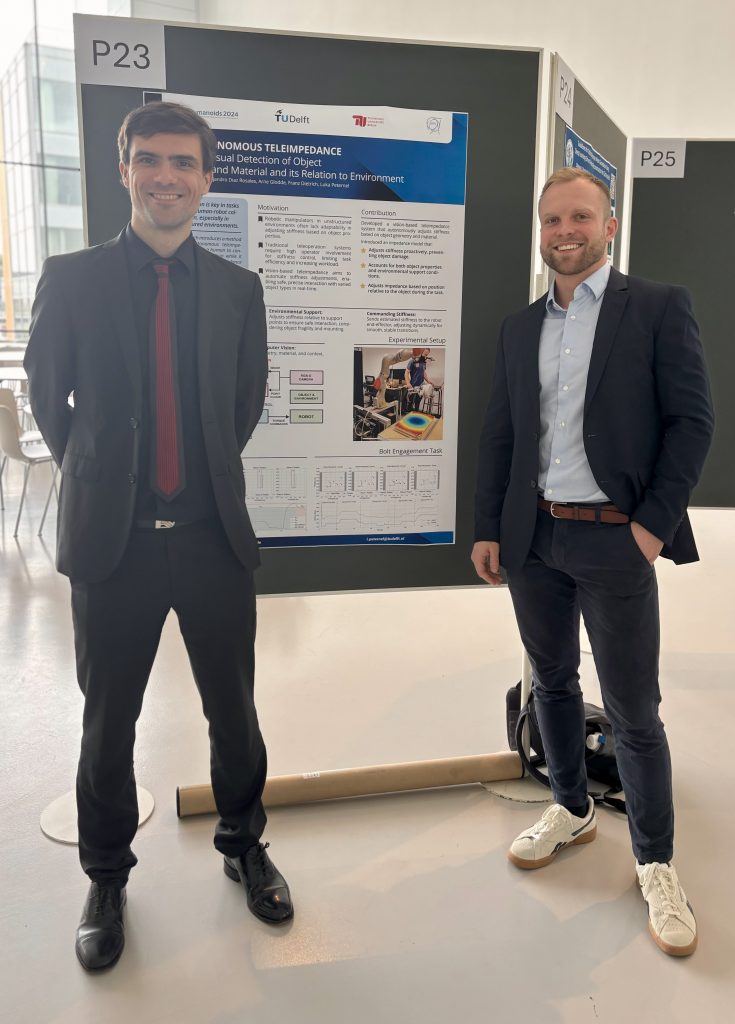I recently had the incredible opportunity to present my paper, titled „Semi-autonomous Teleimpedance Based on Visual Detection of Object Geometry and Material and its Relation to Environment,“ at the prestigious Humanoids 2024 conference. This annual event brings together leading researchers, innovators, and industry experts in the field of humanoid robotics, making it an ideal platform to share groundbreaking advancements and exchange ideas.
The Core Idea
The paper introduces a novel method for achieving shared control between a human operator and a robot. This approach leverages semi-autonomous teleimpedance control, where the robot dynamically adjusts its stiffness based on real-time visual detection of object geometry and material properties using an RGB-D camera. By integrating visual and environmental data into impedance control, the robot becomes capable of performing tasks with enhanced precision and adaptability.
Applications and Validation
This method has been validated through practical experiments involving bolt engagement and surface polishing tasks. These scenarios demand high levels of precision and adaptability—qualities that are critical in modern industrial and collaborative robotics. The results demonstrated the method’s effectiveness in:
- Enhancing Task Performance: The robot’s ability to adjust its stiffness autonomously improved the accuracy and reliability of tasks.
- Reducing Operator Workload: By enabling shared control, the system allows operators to focus on strategic decision-making while the robot handles execution-level complexities.
Key Takeaways from the Conference
Presenting at Humanoids 2024 was not only a chance to showcase this research but also to engage in insightful discussions with other experts. The feedback I received highlighted the potential for expanding this approach to broader applications, including:
- Precision assembly tasks in manufacturing.
- Medical robotics, where adaptability and safety are paramount.
- Exploration of unknown environments, such as space or underwater robotics.
Looking Ahead
This experience reaffirmed my belief in the transformative potential of semi-autonomous systems in robotics. I’m excited to continue refining this approach and exploring its application in diverse domains. Collaboration and dialogue with the robotics community will be key as we strive to push the boundaries of what robots can achieve.
Stay tuned for more updates on this research and other exciting projects! If you’d like to learn more or collaborate, feel free to reach out through my contact page.

